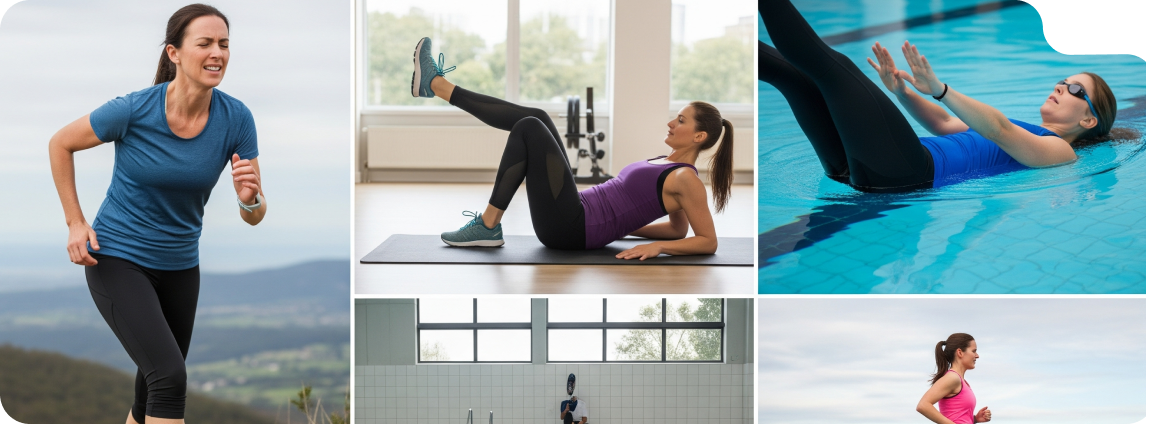Your journey at Restore Physiotherapy:
Example of Achilles Tendinopathy in a recreational runner
Scenario
Anna, a recreational runner, came to us with pain and stiffness in her Achilles tendon that had been troubling her for six months. The pain began shortly after she started hill running as part of her usual routine.
While taking short breaks from running eased the discomfort, the symptoms returned each time she resumed running. On assessment, there was visible swelling around the Achilles tendon, calf weakness, and weakness in the gluteus maximus. This reduced her ability to push off on that leg.
Solution
Our team started Anna on a graded strengthening program that focused on both the calf and gluteal muscles. The program involved performing exercises on every alternate day to ensure that the tendon was able to recover. To maintain her cardiovascular fitness and support her mental wellbeing, we also introduced swimming.
As her pain decreased, we progressed her exercises in terms of load, speed, and complexity, eventually incorporating plyometric drills such as hopping and jumping. Anna also attended clinical pilates sessions to improve biomechanics, coordination, and strength while reducing her risk of injury.
Results
Anna was pain-free with walking by week 2, began running again by week 6, and returned to full running by week 16. Her return to running started with flat ground runs, gradually increasing in distance and intensity while monitoring post-run pain. Once she could manage the running load, we introduced downhill and uphill running.
Overall, this customised running physio program allowed her to return to her favourite sport.




